Tagged: Jewelry History
Below you will find content on the site that is "tagged" with the topic: Jewelry History.
Fine Jewelry University (Show All FJU Articles)
-
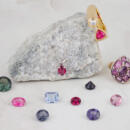
Gem in the Spotlight: Spinel
Spinel may be one of the most underappreciated gemstones in all of history. For centuries it has been confused with more popular gems like ruby and sapphire, and only recently have people begun to appreciate spinel for its own natural beauty. Commonly made in a lab spinel has been used a lower cost substitute for other gems, but natural spinel is actually a stunning gem in its own right. This in-depth article covers the gemology, history, and lore of this amazing and often overlooked gem... read more »
-
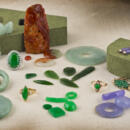
Gem in the Spotlight: Jade
Jade has one of the richest heritages of all gemstones. People have been using jade from as early as 6,000 BC, and it has been an incredibly important part of Asian, Central American, and North American history ever since. But, what is jade, and what has given it such a prominent place in human history? The term “jade” actually refers to two completely different gems: nephrite and jadeite. These are actually two unique mineral species, but since they have been confused for so many years, and are similar in many... read more »
-
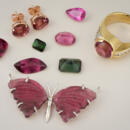
Gem in the Spotlight: Tourmaline
Tourmaline is a beautiful gem that comes in a huge variety of colors (sometimes even within the same stone). This article teaches you all about the history, folklore, and gemology of tourmaline including varieties like rubellite, indicolite, paraíba, and more. You'll also learn about California tourmaline and the unique piezoelectric property that has made tourmaline as useful as it is beautiful... read more »
-
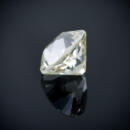
The History of Diamond Cuts
The cutting of diamonds is an art and science that has evolved over centuries of innovation and human ingenuity. See the history of diamond shapes and diamond cutting as we trace them all the way from the ancient Roman point cut to the modern round brilliant. You can see real photos of actual examples of most of the diamond cuts and 3D CAD renders of the oldest and most obscure diamonds that we weren't able to find a great example of (please email us if you have good photos or examples of any of these diamonds)... read more »
-
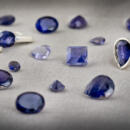
Gem in the Spotlight: Iolite
Iolite is maybe not the first gemstone people think of for their blue-violet jewelry, but it should be near the top of the list. Iolite’s color range of blue, blue-violet, and violet competes for public attention with sapphire, tanzanite, and amethyst. They may have name recognition, but iolite has a rich, unique color and great gem value on its side. It is more subtlety nuanced than amethyst and deeper than many tanzanites. Iolite’s name comes from its violet color. It is from the Greek word “ios” meaning violet. Unlike many... read more »
-

How Are Lab Grown Diamonds Made?
The dream of making a beautiful and valuable diamond from simple carbon has long captivated the imagination of scientists and visionaries alike. Just like the alchemists of old who sought to turn lead into gold, many have tried to achieve this impressive feat. We have only recently been able to produce gem quality, lab grown diamonds that are large enough to be used in jewelry. But, how is it done? Early Efforts Throughout history, many people have claimed to have successfully synthesized diamonds. However, it was not until relatively recently... read more »
Pages
-
The History of the Engagement Ring
Wedding bands go way back in history. One example of this is the Ancient Egyptians who were buried wearing rings made of a single silver or gold wire on the fourth finger of their left hands. The wedding band as a ring has no beginning or end and is seen as an ancient symbol of eternal love. The fourth finger of the left hand has symbolism of its own. Ancient peoples believed it to be connected directly to the heart by the “Vena amoris,” which translates to “Vein of Love.”... read more »
Blog Posts
-
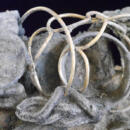
Ancient Roman Jewelry Discovered
Archeologists have discovered one of the finest collections of Roman jewelry ever found in Britain. Dubbed the Fenwick Treasure, the fine gold and silver jewelry was found under a department store in the historic town of Colchester. This unique discovery gives us a glimpse into a historic and troubled time. It is believed that the treasure was buried in the floor of a house for safe keeping on the eve of the Boudiccan Revolt in AD 61. The owner likely knew that a large army was marching towards her town... read more »